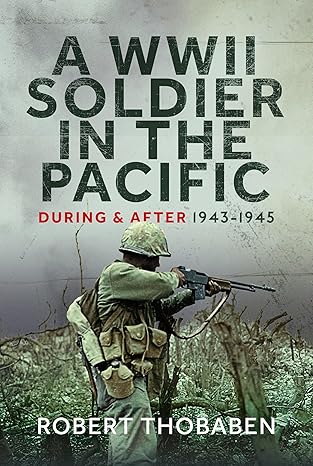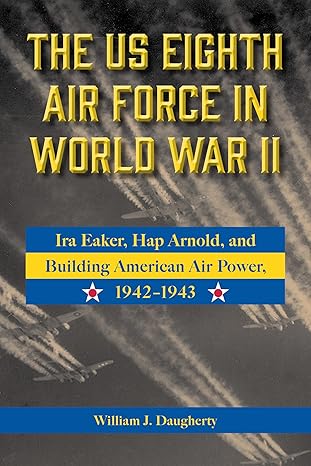Japan's Monster Sub
By Irwin J. Kappes
Jules Verne's fictional "Nautilus" submarine had every comfort, including a pipe organ and picture windows. But even Verne's fertile imagination would have been overtaxed by the possibility of submarines large enough to have hangars that could each carry and launch three bomber aircraft. It's a notion that wouldn't even have appeared in the daydreams of an errant 20th century schoolboy. But born of desperation, just such a monster submarine actually made its little-known appearance in World War II.
Jules Verne's fictional "Nautilus" submarine had every comfort, including a pipe organ and picture windows. But even Verne's fertile imagination would have been overtaxed by the possibility of submarines large enough to have hangars that could each carry and launch three bomber aircraft. It's a notion that wouldn't even have appeared in the daydreams of an errant 20th century schoolboy. But born of desperation, just such a monster submarine actually made its little-known appearance in World War II.
The Allied successes in the naval battles of Guadalcanal convinced the Japanese General Staff that the war was going badly and that November 1942 had marked a turning point for the worse. Drastic action was needed, and Japanese naval planners realized they must play into their strength. They knew they were ahead of the Allies in many elements of submarine technology, having far more classes of submarines in addition to the world's most effective torpedo, the Type 95. They were also convinced that their air power capability was superior. But they had no illusions about what they were up against in having taken on the world's mightiest industrial power. They decided that the war must now be taken to the enemy, and to do that successfully it must be taken simultaneously to the air and underseas. This would be the empire's salvation. And the imaginative plan would be an achievement that would stun the world.
Thus began work on the world's first submarine aircraft carrier in January, 1943 and in little more than a year, the largest submarine ever built was launched. With an aircraft hangar and carrying three bombers, it had the ability to travel anywhere on the globe, underwater and undetected, launch an airborne attack, and return home safely. The War Ministry planned to build a fleet of 21 of these monster subs, dubbed "Sen Tokus", and work began on the first one in early 1943 but only three were actually built—I-400, I-401 and I-402. They each displaced 6,560 tons, were 400 feet long (as compared with a typical U.S. sub's length of just over 200 feet) with a surface speed of 19 knots and 6.5 knots submerged. Overall, they were three times the size of an average WWII sub and had a crew consisting of between 144 and 220 men, depending on the mission. As is usual with any new class of vessel, many design flaws required correction and the intricacies of launching aircraft from a surfaced submersible required lots of training. But eventually, within 45 minutes of surfacing, her skilled personnel could break out, assemble, fuel, arm and catapult all three aircraft. The sleek-looking Aichi M6A Seiran bombers had a wingspan of 40 feet and a length of 38 feet. The planes were launched by a 120-foot catapult and were hoisted back aboard by powerful hydraulic cranes. They were stowed in the hanger compartment with floats detached and wings and tails folded. There was even room for a fourth plane if needed.
There were at least two ways for this mighty new weapon to reverse Japan's faltering fortunes. One would be a strike on the Panama Canal. A surprise attack from the Atlantic side where the Americans had virtually no air defenses, would destroy the Gatun locks, thus draining Gatun Lake. It would cripple Allied logistics for at least a year. This might be immediately followed by the knockout punch—a simultaneous germ warfare attack on New York and San Francisco using bacteriological weapons such as rats and insects infected with bubonic plague, dengue fever, typhus and cholera. They were weapons that could kill millions of people. It would be "shock and awe" writ large, at a time when the U.S. was developing an even more destructive weapon at Los Alamos (and therefore in no moral position to call "foul"). In the minds of the General Staff this would certainly nullify the Allies' insistence of "unconditional surrender" and perhaps even enable terms that would preserve Japan's sovereignty and hegemony over the western Pacific—which the Japanese had, in any event, considered their due since 1931 when they began their modern-era imperialistic expansion.
Work proceeded quickly on planning of the Panama attack, which was dubbed "Operation PX". By June, 1945 all the boats were completed and disguised with fake funnels to give them the appearance of innocent coastal steamers in the event of any Allied air reconnaissance. They proceeded north into the Sea of Japan on the west coast of Honshu to Takaoka where a full-scale replica of the Gatun Locks had been built in Toyama Bay. This was used for a number of simulated air strikes but snooping American subs were an occasional annoyance.
The chemical warfare plan had been long in development. A medical laboratory in Harbin, Manchuria had perfected the host of deadly agents and tested them by force on Chinese and Caucasian war prisoners. In charge was Vice Admiral Jisaburo Ozawa, Vice Chief of the Navy General Staff. However, four months before war's end the Staff lost its nerve, declaring that "Germ warfare against the United States would escalate the war against all humanity."
Before the carefully rehearsed Panama Canal mission could get underway from the Maizuru naval base, the General Staff learned that the Allies were planning an invasion of the Japanese homeland. Captain Ariizumi, who had planned and rehearsed the Panama Canal attack, was ordered to change the mission to an attack on the Allied naval base at Ulithi atoll, about 800 miles east of the Philippines. Ulithi was the easternmost atoll of the Caroline Islands and it offered a large deep lagoon that could accommodate the huge fleet that had been one of the Allied gathering places for the invasions of Leyte and Okinawa. But just while Ariizumi's mission was being provisioned the A-bomb attacks on Hiroshima and Nagasaki changed everything. On August 15th, 1945 Emperor Hirohito made his dramatic radio announcement from the Imperial Palace announcing Japan's surrender. Orders came from Tokyo to abort the attack. Captain Ariizumi was struck dumb, thinking initially that it might be an Allied ploy of some sort. Finally he was forced to accept Tokyo's orders as valid and ordered his flotilla to destroy all code machines, documents and ordnance, fire all torpedoes and catapult all aircraft into the sea. Most painful of all was the order to hoist the black flag of surrender and proceed to the nearest Allied base. Captain Ariizumi never did surrender, prefering suicide. He had given instructions that his body be wrapped in the Japanese flag and buried at sea.
Submarines I-400 and I-401 were subsequently turned over to the Allies and an American prize crew sailed them to Pearl Harbor for study. Two other late-model Japanese subs were included and were also of interest because they were almost twice as fast as American designs. The subs were greeted by brass brands and ceremony upon arrival at Oahu, but it didn't take long for the Soviets to learn of the acquisition and, as an ally of the U.S. they were forcefully demanding access. The Russians were even more behind on submarine technology than the U.S. and were as eager as the U.S. Navy to learn how the Japanese had moved so far ahead. One result of U.S. backwardness was the high casualty rate of American submariners who suffered 40% of all naval casualties. The truth is that the U.S. Navy was way behind the curve, particularly on torpedoes. Submariners were forced to use torpedoes that were 70% unreliable. In addition, the American submarine torpedo had a range of 5,500 meters while the Japanese Type 95 Long Lance torpedo had a range of 12,000 meters—with better accuracy and dependability. Sailors speculated that the reason for the poor performance was that the U.S. Navy's BuOrd insisted on manufacturing its own torpedoes—in an antiquated facility in Alexandria, Virginia. And historian Theodore Roscoe quipped that the only thing reliable about [American] torpedoes was their unreliability.
In any event, after U.S. Navy technicians had completed detailed examinations of the Sen-Tokus on May 31, 1946, I-400, I-401 and the two other top-secret Japanese submarines were ordered hastily sunk by the American submarine U.S.S. Cabezon off of Barber Point, Oahu, Hawaii. The fate of I-402 was equally ignominious. She was converted to carry fuel from the East Indies to Japan but never got to complete such a mission and was hurriedly scuttled near the island of Goto Retto in 1946—again to frustrate Russian demands for inspections. Construction on two additional boats of this design was halted before they were completed. And the construction of an additional 18 boats of the class was cancelled. It was the end of the short life of the most amazing advancement in underwater warfare technology until the first nuclear sub.
That would be the end of the story, except for one thing. The wreckage of I-401 was re-discovered by scientists of the University of Hawaii in March, 2005 by a "Pisces" deep-sea submarine at a depth of 820 meters. The bow was found broken off just forward of the aircraft hangar, the two pieces not far apart, and separated by a field of debris. The "Pisces" pilot found the main hull sitting upright on the bottom, in good condition, the I-401 numbers clearly visible on the sides of the conning tower, and the anti-aircraft guns in seemingly perfect condition.
It is frightening to realize that an enemy state with a cornered-rat mentality once had the capability—and even the plans--to simultaneously drop deadly, contagious bacteriological weapons on two of the United States' largest metropolitan areas. It is also a poignant lesson in the perils of unpreparedness.
(N.B. – A restored M6A Seiran airplane is displayed at the National Air and Space Museum in Washington, DC. It had a top speed of 295 mph and a range of 642 nautical miles. It is the only one of its type in existence).
© 2025 Irwin J. Kappes.
About the Author:
Mr. Kappes served in U.S. Navy on destroyers in the Atlantic and Pacific during WWII. He holds an MBA from Boston University and retired after a 32 year advertising career with the Du Pont Company. He was also a retired Vice President with United States Hosiery. He is married and his hobbies include painting, writing, and travel. His hometown is New Castle, PA. and presently living in Tinton Falls, NJ.
* Views expressed by contributors are their own and do not necessarily represent those of MilitaryHistoryOnline.com.




















